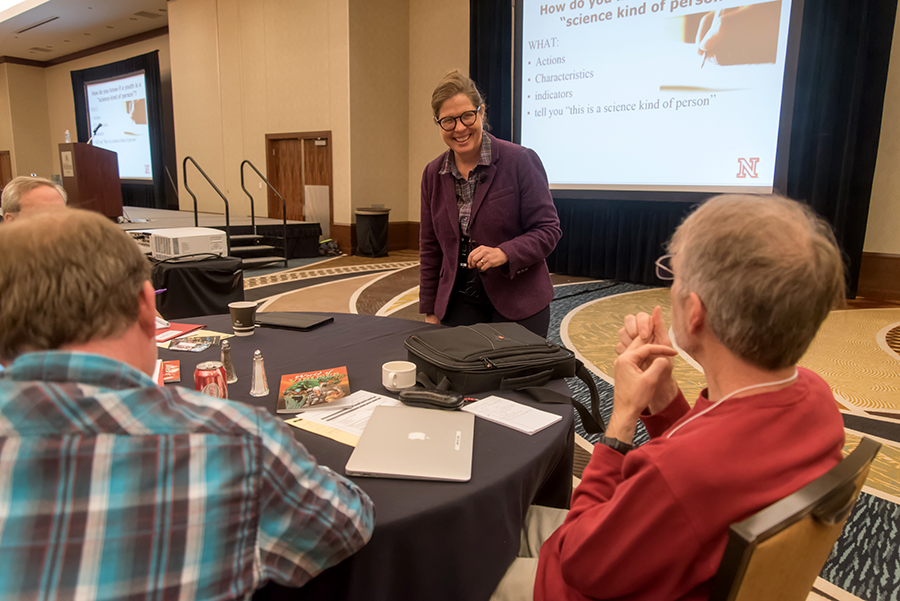
by Deann Gayman | University Communication
March 21, 2017
Past research has shown that enthusiasm for science is the same for girls and boys until a drop among females between fourth and eighth grades. University of Nebraska-Lincoln sociologists took a closer look at why this happens and found that gender norms, stereotypes and, interestingly, friendships may be playing a large role.
Through surveying 444 middle schoolers, the researchers found that girls and boys had similar comprehension and grades in science. But when asked about their friends, both males and females were more likely to consider boys as a "science kind of person."
Boys said "no" to 10 percent more of their female friends than their male counterparts when asked the question. Girls answered "yes" for 41 percent of male friends, but just 25 percent of female friends.
Robin Gauthier, a post-doctoral researcher and the study's lead author, said boys and girls were similar in how they answered the question about themselves, which suggests that stereotypes about scientists and gender norms are affecting girls' aspirations for careers in science.
"People have this image of a scientist in their mind, and a scientist is a white male, so if you're asked if your female friend is like that, the go-to answer is going to be no," Gauthier said.
The study also found that girls interested in science were more likely to have close friendships with like-minded girls – something that is both advantageous and detrimental, Gauthier said.
"It is probably good for those girls who want careers in science to be friends with each other because they can encourage each other, but there isn't a mix of ideas and aspirations," Gauthier said. "There is an interaction between friendship patterns and gender norms that contributes to girls having to choose between being perceived as a girl or pursuing science. That's a rough choice."
Gender plays an outsized role in middle school, said Patricia Wonch-Hill, a Nebraska sociologist and study co-author.
"Hitting puberty adds an extra layer to gender," Wonch-Hill said. "It tends to make femininity and masculinity more important."
Wonch-Hill and Gauthier said the study's findings are a step in addressing a shortage of women in the sciences. More might be done at middle schools to encourage interest in science, such as inclusive science clubs, inviting scientists of all backgrounds to speak or showing how everyday interests relate to science.
"Making it relevant to their lives is really important," Wonch-Hill said.
The study was published in the journal Social Sciences in February and was co-authored by Nebraska researchers Julia McQuillan, Amy Spiegel and Judy Diamond. It was funded by the National Institutes of Health (R25OD01506).